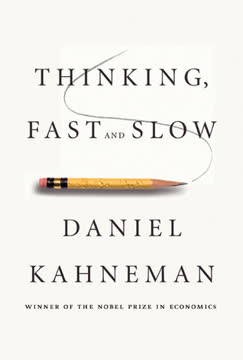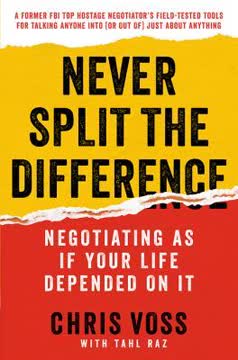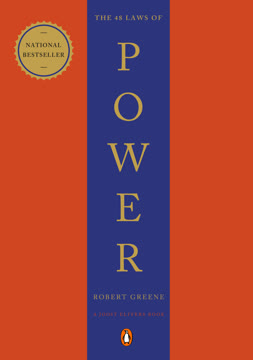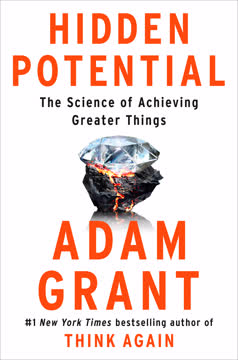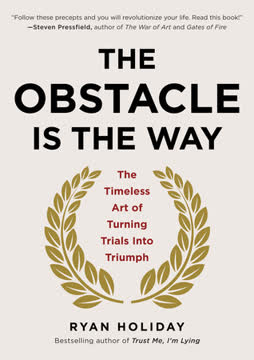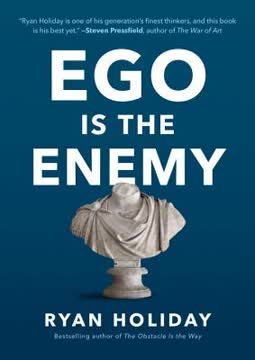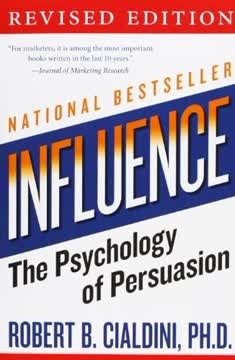重点摘要
1. 两种系统驱动思维:快速直觉与缓慢深思
系统1自动且迅速运行,几乎不费力且无意识控制感。
系统1与系统2。 我们的思维由两套截然不同的系统构成:系统1快速、直觉且自动,系统2缓慢、深思且分析。系统1负责快速判断和印象形成,系统2则处理复杂计算和有意识推理。尽管我们自认为依赖系统2,许多选择实际上是系统1默默主导的结果。
系统1的自动行为。 系统1涵盖天生技能,如识别物体、定位声音、理解简单句子,也包括通过练习变得自动的习惯性技能,比如阅读或在空旷道路上驾驶。这些行为几乎不费力,且无需有意识控制。
系统2的费力活动。 当我们专注注意力、解决问题或做出深思熟虑的选择时,系统2便被激活。这些活动需要有意识的努力,且一旦注意力分散便会受阻。系统2容量有限,容易疲劳,资源耗尽时便依赖系统1。
2. 注意力是有限资源:费力任务使瞳孔放大
“集中注意”这句话恰如其分:你拥有有限的注意力预算,分配给各项活动,超出预算必然失败。
瞳孔是窗口。 瞳孔放大是心理努力的可靠指标,反映任务需求变化。任务越费力,瞳孔放大越明显;平淡对话则几乎无变化。这一生理反应直观展现大脑能量消耗。
心理努力与盲视。 高度专注任务时,人们对通常会吸引注意的刺激视而不见。实验显示,参与复杂认知任务者常忽略明显事件,凸显注意力有限及资源选择性分配。
最小努力法则。 系统2和电路容量有限,但对过载反应不同。电路过载跳闸,心理过载则表现为选择性精准反应。神经系统消耗的葡萄糖多于身体其他部分,费力的心理活动尤其耗能。
3. 系统2懒惰:过度自信与认知轻松占上风
说“10美分”的人似乎是最忠实的最小努力法则追随者。
系统2的主要功能。 系统2主要监控并控制系统1“建议”的思维和行为,允许部分直接表现,抑制或调整其他。然而,系统2常表现懒惰,倾向未经充分审查便接受直觉答案。
过度自信与认知轻松。 许多人过度自信,过分信赖直觉。他们显然觉得认知努力至少有些不适,尽量避免。这在棒球与球拍问题中体现明显,许多人因未主动核查而给出直觉但错误的答案。
智力与理性。 高智力并不保证免疫偏见。理性,即批判性思维和自我监控能力,是另一种能力,因人而异。更理性者更警觉、思维活跃,对直觉持怀疑态度。
4. 联想是基础:启动效应塑造思维与行为
这套复杂心理事件的核心特征是连贯性。
联想激活。 被唤起的想法会触发更多想法,在大脑中形成连锁反应。此过程称为联想激活,快速、自动且无意识,将记忆、情绪和身体反应连成一体。
启动效应。 暴露于某词或概念会立即且显著影响相关词汇或行为的唤起难易度。此效应能在无意识中影响行为,如实验中暴露于与老年相关词汇使年轻人步伐变慢。
意动效应。 意动联结也可逆向作用。德国一项研究让学生以约正常步速三分之一的速度行走5分钟,之后他们更快识别与老年相关的词汇,如“健忘”、“年老”、“孤独”。
5. 认知轻松影响信念:熟悉感胜过逻辑
任何让联想机制顺畅运行的因素都会偏向某种信念。
认知轻松与紧张。 认知轻松表明一切顺利,认知紧张则提示问题,需要系统2更多动员。字体清晰度、重复、情绪甚至面部表情都会影响这两种状态。
熟悉与真理的错觉。 熟悉感带有一种“过去感”,似乎直接反映先前经验,但这是一种错觉。正如Jacoby等人所示,名字“David Stenbill”看起来熟悉,是因为你看得更清楚。
说服信息。 撰写说服性信息时,应最大化易读性,使用简单语言,增强记忆点。频繁重复、押韵和易发音的来源能提升可信度,即使信息本身是假的。
6. 规范与惊奇定义现实:因果无处不在
惊奇能力是心理生活的核心,惊奇本身是我们理解世界和预期的最敏感指标。
评估常态。 系统1维护个人世界模型,持续更新何为正常。惊奇是理解世界和预期的关键指标,违背常态的事件激发解释需求。
寻找因果与意图。 大脑自动寻找事件间因果联系,即使是虚假的。这种连贯需求促使我们构建故事,连接零散知识,满足解释欲望。
摩西错觉。 摩西错觉可用规范理论解释。动物进入方舟设定了圣经背景,摩西在此语境下并不异常。你未必积极期待他,但提及其名并不令人惊讶。摩西与诺亚发音相似也助长了错觉。
7. 代表性导致错误:忽视基率
失败这些小测试,至少部分原因是动力不足,努力不够。
代表性启发。 人们常根据事件与类别或刻板印象的相似度评估概率。这种启发导致可预测偏差,如忽视基率和样本大小。
棒球与球拍问题。 棒球与球拍问题、花卉三段论和密歇根/底特律问题有共通点。失败这些测试,至少部分因动力不足,未尽全力。
智力、控制与理性。 研究者用多种方法探讨思维与自控的关系。有些通过相关性问题:若按自控力和认知能力排名,个体在两榜单中位置是否相似?
8. 可得性扭曲感知:恐惧与媒体影响现实
人们倾向根据记忆中信息的提取难易评估问题重要性,而这主要受媒体报道程度影响。
可得性启发。 人们根据实例唤起的容易程度评估事件频率或概率。媒体报道、个人经历和生动例子影响此启发,导致系统性偏差。
媒体的角色。 可得性启发解释为何某些议题在公众心中高度显著,而其他被忽视。人们根据记忆提取难易评估问题重要性,媒体覆盖度是关键因素。
诚信箱实验。 平均来看,厨房使用者在“眼睛周”贡献的金额几乎是“花朵周”的三倍。显然,象征性被监视提醒促使人们行为改善。正如预期,这种效应发生时人们毫无察觉。
9. 前景理论:损失比收益更显著
情绪的尾巴摇动理性的狗。
伯努利错误。 伯努利理论假设财富效用决定幸福感。杰克和吉尔财富相同,理论断言应同样幸福,但不需心理学学位也知今日杰克欢喜,吉尔沮丧。
前景理论核心。 前景理论认为人们相对于中性参照点评估收益与损失,且对收益和损失的敏感度递减,且损失厌恶使损失显得更为重要。
四重模式。 四重模式是前景理论核心成就之一。四个象限中三者熟悉,第四象限(右上)则新颖且出乎意料。
10. 框架效应:等价描述引发不同选择
“手术后一个月存活率90%”比“手术后一个月死亡率10%”更令人安心。
框架效应。 同一信息不同表述常引发不同情绪,导致不同选择。因系统1对措辞和语境极为敏感。
忙碌且疲惫的系统2。 系统2忙碌时,系统1影响力增强且偏好轻松。认知负荷大者更易做出自私选择,使用性别歧视语言,社交判断也更肤浅。
电车难题。 电车难题是一系列伦理与心理学思维实验,涉及是否牺牲一人以救更多人等道德困境。
11. 记忆自我主导:时长忽视扭曲价值
记忆是我们生活体验中唯一可保留的部分,思考人生时我们只能采用记忆自我的视角。
两种自我。 我们有两种自我:体验自我,活在当下感受痛苦与快乐;记忆自我,记录得分并基于记忆做决策。两者常有利益冲突。
时长忽视与峰终法则。 记忆自我倾向忽视体验时长,关注最强烈时刻(峰值)和结束时刻(终点),导致记忆和选择扭曲,未必最大化真实幸福。
人生如故事。 我们倾向将人生视为故事,聚焦重大事件和难忘瞬间,而非整体时长。这种叙事方式可能导致优先考虑精彩故事而非实际幸福。
12. 过度自信助长风险:技能错觉驱动市场
世界远比你想象的复杂。连贯性主要源于思维方式。
理解错觉。 我们倾向构建有缺陷的过去故事,塑造对世界的看法和未来预期。这种叙事谬误导致理解错觉,过高估计预测和控制能力。
技能错觉。 在许多领域,如选股,人们高估自身技能和超越市场的能力。此错觉源于高水平技能体验和奖励自信的职业文化。
资本主义引擎。 过度自信与乐观结合,成为资本主义强大引擎,推动创新和经济增长,但也可能导致过度冒险和代价高昂的失败。
最后更新日期:
FAQ
What's Thinking, Fast and Slow about?
- Dual Systems of Thinking: The book explores two systems of thought: System 1, which is fast, intuitive, and emotional, and System 2, which is slower, more deliberate, and logical. These systems shape our judgments and decisions.
- Cognitive Biases and Heuristics: Kahneman discusses various cognitive biases that arise from our reliance on heuristics, leading to systematic errors in judgment and decision-making.
- Impact on Economics and Psychology: The book bridges psychology and economics, challenging the traditional rational-agent model and offering insights into human behavior in economic contexts.
Why should I read Thinking, Fast and Slow?
- Understanding Human Behavior: The book provides valuable insights into how we think and make decisions, improving personal and professional decision-making.
- Practical Applications: Kahneman offers advice on mitigating cognitive biases in various aspects of life, leading to better outcomes.
- Influential Work: As a Nobel Prize-winning psychologist, Kahneman's work has shaped behavioral economics and psychology, offering groundbreaking research.
What are the key takeaways of Thinking, Fast and Slow?
- Two Modes of Thinking: Recognizing when System 1 or System 2 is at play can help individuals make more informed decisions.
- Cognitive Biases: Understanding biases like loss aversion and the anchoring effect can help mitigate their impact on decision-making.
- Framing Effects: The way information is presented can significantly influence decisions, even when the underlying facts remain the same.
What is the difference between System 1 and System 2 in Thinking, Fast and Slow?
- System 1 Characteristics: Operates automatically and quickly, with little effort and no sense of voluntary control, responsible for intuitive reactions.
- System 2 Characteristics: Allocates attention to effortful mental activities, is slower, more deliberate, and requires conscious effort.
- Interaction Between Systems: They often work together, but System 1 can lead to errors that System 2 may not catch, highlighting the need for analytical thinking.
How does Thinking, Fast and Slow explain cognitive biases?
- Definition of Cognitive Biases: Systematic patterns of deviation from norm or rationality in judgment, leading to illogical conclusions.
- Examples of Common Biases: Includes the anchoring effect and confirmation bias, affecting decision-making.
- Mitigating Biases: Recognizing these biases is crucial for improving decision-making and counteracting their effects.
What is the availability heuristic in Thinking, Fast and Slow?
- Definition: A mental shortcut relying on immediate examples that come to mind, leading to overestimating event likelihood based on recall ease.
- Impact on Decision-Making: Can cause biases in judgment, such as overestimating risks after vivid events.
- Examples in Everyday Life: Affects risk assessment and personal experiences, highlighting the need for rational decision-making.
How does Thinking, Fast and Slow address overconfidence?
- Definition: A cognitive bias where individuals overestimate their knowledge, abilities, or prediction accuracy.
- Illusion of Understanding: People often feel confident in judgments without sufficient evidence, leading to poor decision-making.
- Mitigating Overconfidence: Awareness of this bias and seeking contrary evidence can improve assessments and decision-making.
What is loss aversion in Thinking, Fast and Slow?
- Definition: Losses are felt more intensely than gains of the same size, leading to risk-averse behavior.
- Impact on Decision-Making: Causes individuals to avoid risks even when potential gains outweigh losses, leading to suboptimal decisions.
- Real-World Examples: Seen in financial decisions and negotiations, understanding this bias aids in balanced choices.
What is the planning fallacy as described in Thinking, Fast and Slow?
- Definition: The tendency to underestimate time, costs, and risks of future actions while overestimating benefits, leading to optimistic forecasts.
- Inside vs. Outside View: The inside view focuses on project specifics, while the outside view uses statistical information from similar past projects for accuracy.
- Mitigating the Fallacy: Reference class forecasting helps ground expectations in reality by considering similar project outcomes.
What is the endowment effect as explained in Thinking, Fast and Slow?
- Definition: People assign greater value to items they own compared to items they do not own, leading to reluctance to trade or sell.
- Psychological Basis: Attributed to loss aversion; the pain of losing an item is felt more acutely than the pleasure of acquiring it.
- Experimental Evidence: Experiments show participants value owned items higher, highlighting irrational human valuation.
What is the framing effect in Thinking, Fast and Slow?
- Definition: Occurs when people react differently to a choice depending on its presentation, such as in terms of gains or losses.
- Examples of Framing: The Asian disease problem shows how statistical outcomes framed differently lead to different preferences.
- Importance of Awareness: Recognizing framing effects encourages critical thinking about how options are presented.
What are the best quotes from Thinking, Fast and Slow and what do they mean?
- “Nothing in life is as important as you think it is when you are thinking about it.”: Highlights the focusing illusion, suggesting perceptions can be skewed by current focus.
- “The experiencing self is the one that answers the question: ‘Does it hurt now?’ The remembering self is the one that answers the question: ‘How was it, on the whole?’”: Distinguishes between immediate experiences and retrospective evaluations, shaping perceptions of happiness.
- “We can be blind to the obvious, and we are also blind to our blindness.”: Reflects limitations in self-awareness regarding cognitive biases, underscoring the need to recognize judgment limitations.
评论
《思考,快与慢》和《心态》这两本书的评价褒贬不一。有些读者认为书中见解深刻,启发良多;但也有读者批评其解释冗长,举例过多。一位评论者指出心态对个人成长的重要性,却觉得写作风格枯燥乏味;另一位读者认可“成长型心态”的理念,但认为书中缺乏实用建议。尽管存在这些批评,整体评分仍高达4.34(满分5分),表明许多读者从中获得了有价值的内容。
Similar Books
